
Up early to Trafalgar Square (8:30) and thinking maybe, just maybe, I'll be able to get in and see the Leonardo exhibition on at the National Gallery, Painter at the Court of Milan. Sadly, it was not to be.
Turning the corner and seeing a very long queue snaking around the building made me snap back to reality. I half-heartedly joined the end and waited a few minutes. However, some staff were walking down the queue saying that there were "no tickets" and that we would not get in, so I gave up and went to the Wallace Collection again instead. I might try Leonardo one more time in January.
In the meantime, the Wallace is a great collection of lots of stuff. Including paintings, furniture, porcelain, ceramics and medieval armour. A particular emphasis on pre-revolution French art.
Portrait of Madame Perregaux, Elizabeth-Louise Vigée Le Brun (18th C)
Madame Perregaux was reportedly very pleased with this portrait because it was very flattering. I like it as well, the eyes are almost twinkling.

Detail from Standing Bowl: Lucretia. Urbino District, Mid-16th Century

There are some wonderful pictures on display in the exhibition taking place at the Fitzwilliam Museum in Cambridge, Vermeer's Women. Not all of them by Jan Vermeer himself.
Although Jan Vermeer is one of the best known of the Dutch 17th Century masters, some of the others here are also amazingly good, even painting similar subjects. For example: Pieter de Hooch and Gerard ter Borch.


Right: Pieter de Hooch, The Courtyard of a House in Delft c.1658
There's a 10 minute discussion about the exhibition on You Tube :
You Tube hosts many interesting videos on these artists, including Vermeer's Milk Maid.
How great is YouTube?
As well as being a superb resource for recipes (great for cooks lacking confidence), I've also found out how good it is for watching artists work. It's truly fascinating watching the creative process.
For instance, Scott Waddell produces extremely fine oil paintings, with a very high level of detail and meticulous painting. If you look at his Webisode 3: Imagining a Composition , the artist he made me think of was Théodore Géricault, specifically for his Raft of the Medusa. Watching him preview a portrait is amazing :
Another couple of equally talented artists :
The new resources we have nowadays should revolutionise education. Where is the revolution?

When you step into L. Cornelissen & Son, it's like stepping back in time.
The shop's not large, but full of everything an artist might want: with floor to ceiling shelves, cupboards and drawers, all in a dark wood.
To top it off though, and what makes that extra difference in any shop, is the helpfulness and knowledge of the staff. Someone I can only assume was Mr Cornelissen senior, took time to help and educate me on a number of things I wanted to buy, including brushes, paint and medium. It's the personal touch that has all but vanished in many places, and one of the reasons I'll go back.
The shop is on Great Russell Street, on your way to the British Museum : map
I went to the RA a couple of weeks ago on a Sunday afternoon for the Degas and the Ballet: Picturing Movement show.
It costs money, and there was a queue, but knowing the sorts of queues for the National Gallery's Leonardo exhibition, one can't complain (it only took about 20 minutes to get in).
Inside, it really was very low lighting: dim, in fact. I was told that this was to protect the pieces, but I'm not sure if this referred to the photographic pieces or the paintings. I thought it a bit of a shame though. It was also quite busy (see: queue), which meant that seeing everything was a bit trying on occasion. It was worth it though.
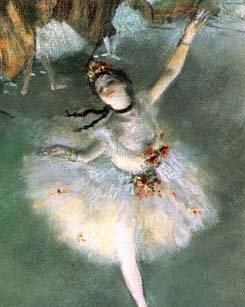
His style of painting is one of the attractions. He captures movement very well and his brush strokes often take on an almost pastel stick quality, something unique to him (he was also a master pastel artist). His sense of light and shade, especially from the large rehearsal room windows or stage lights, was also masterful.
Photosculpture : Bullet Time in the 19th Century
The show was subtitled Picturing Movement and the theme was a comparison of the art of Degas and the new art form of photography. A lot of the exhibition was devoted to the display of historical artifacts related to both the still photograph and its successors. Not just the moving image but such things as the photo-sculpture, a form of photography that involved taking dozens of simultaneous pictures, with cameras arranged in a circle around the subject. I was very surprised to see this technique over a hundred years before The Matrix!
A good show. I just wish that they a) turned the lights up a bit and b) allowed (non-flash) photography inside.
As is often the case, Wikipedia has a good page on Degas.
I saw this at the British Museum the other week. It's very striking.
"During the Roman Period in Egypt, the tradition of providing an eternal image of the deceased over the head of the mummy was maintained in a variety of forms, including panel-portraits, paintings on shrouds, cartonnage masks and moulded plaster heads."
about AD 100-170 from Hu (Diospolis Parva).

Beddingham Hill
I've been to quite a few shows in many big museums and galleries this year, but easily forget that there are a lot more smaller, private galleries around, often with very interesting and appealing art in them. If I have time, I've made a special effort to pop in if I pass one, if it doesn't look too intimidating.
A few months ago I had a great look around the Francis Kyle gallery. The exhibition was called This Twittering World and featured art inspired by T.S. Elliot's Four Quartets.
Passing by, I saw something amazing through the window and had to have a look. The two staff that showed me around some of it (including paintings not on display) were wonderful. This sort of thing does not happen at the National Gallery, or any of the larger galleries in general.
In the end though, the artist that struck me most here was Jonathan Briggs. Beautiful and serene paintings of idyllic English landscapes. I love these. I would love to own one.
At the weekend, I looked at the Winter Collective exhibition at the gallery Different in Percy Street. Like the Francis Kyle visit, it was the sight of very arresting paintings that drew me in, in this case the large and unsettling oil paintings by Johan Andersson.
These are very well executed but not something I would hang on my wall in general. Apart from the subject matter being dark and disturbing, they're very large. The oil painting is beautifully done however and I cannot complain too much because the subject matter (stumps, scars and acid victim) is not far removed from some of my own dabblings many years ago.
One thing you do start to notice is how much each individual work goes for. From a a few hundred (small, screen print style) to many thousands. If paper money starts to seriously lose its store of value, then many people see art as an alternative investment. Maybe wisely.
I went to the Comica Independent Comics Fair on Saturday and had a good time checking out a lot of obscure and interesting stuff. It really took me back to the time I used to buy and read comics a lot of comics.
The fair took place in the Bishopsgate Institute, packing everyone into a large hall, with a stage at one end showing artists drawing live, projected on a big screen.
It was also busy (which was good to see) so you had to squeeze through the rows of tables carefully, trying not to get in the way of other people squeezing through. Many of the tables were shared between two or more individual artists, writers or publishers (often one person being all three). Every table was very different. It was a perfect opportunity to meet and chat to artists of all types.
There were a few professional publishers there, with professionally produced (and gorgeous) hard backed graphic novels, but most people were there as self-publisher, small scale and self-produced.
A big difference now from what I remember from years ago is that the quality of the printed material is much higher, and the cost and ease of production has dropped so much, that it almost seems like a golden age. A lot of the people I spoke with did a fair amount of their art on the computer using Adobe Photoshop. Mostly, this means they start the drawing in the usual (traditional) manner on paper, then scan and finish on the computer.
Much of the professionally printed and distributed material is of a very high standard now as well.It used to be that the French or Italian comic books were often of a much higher print quality (paper, binding etc.). This is no longer the case. It's astonishing to see how much care and attention is placed on some books produced here or the USA.

I bought a hard-back graphic novel by Uli Oesterle called Hector Umbra. It's a beautifully produced book published by Blank Slate Books, all in colour. For a few pictures from the book, see a blog by Alison Sampson called SPACE IN TEXT.
Philippa Rice - Futuristic Dwellings (detail)
Part of the charm of a lot of self-published material is that people play and experiment with the media. Maybe things are not slick but they're fun (and still well printed). Sometimes, the packaging of the comic is almost as important as the content, things such as fold-outs, wrap-arounds etc. Comics, small and large, prints, screen-prints, posters, toys, badges and all sorts of things.
It was great that the artists themselves were there and happy to discuss the work they've done, how they actually produced it and what it means. A suprising number of girl artists as well and quite a few from overseas currently working in London (especially Japan and Korea).
All in all, an interesting afternoon out.
My new Kindle has been great.
I've only bought one book so far but read it without any problems. The Kindle's easier to hold than a book in many ways, especially one-handed page turns. Since then I've read a few M.R.James ghost stories, downloaded from Project Gutenberg, and stuck some PDF's on it (just testing).
The PDF format is not great for a device like the Kindle, you have to zoom and pan around the page, so it's treated more like a large image than a text document. However, if you set up your Amazon Kindle preferences, you can enable emailing a PDF to your Kindle account and, by making the subject of the mail "convert", Amazon will convert the PDF to Kindle format and transfer the converted document to your Kindle wirelessly. Once converted, it reads (almost) like a normal Kindle book. There may be a few odd formatting issues, but the result has been perfectly readable so far.
I have also discovered a wonderful free service that has made a huge positive difference to my Kindle experience. This is a web browser add-on called Send to Reader.
I installed this add-on in Mozilla Firefox, downloaded via the Firefox Add-Ons dialog. Once you have created a Send To Reader account and set up the service, you can add a new "Send To Reader" button on a Firefox toolbar.

Pressing this button will send the web page you're viewing to your Kindle for reading, converting it to the normal Kindle format on the way. This means that you can easily get interesting web pages onto your Kindle for later reading.
The service will obviously work best when the web page is mainly text but the results I have had so far have been great. I hope that I can push stuff to the reader this way, rather than stack lots of web browser "tabs", in the (often vain) hope I'll find time to come back and read it (if I remember). Once it's on the Kindle, I can read it in bed.
Perfect! This made my day.

It's been at least 20 years since I last visited the National Gallery in Trafalgar Square. After visiting quite a few museums and galleries in the past year, you forget that this is the grandfather of them all. It has so many stunning pictures.

I popped in on Sunday morning for a couple of hours, and was considering how to plan more visits. I thought I would start with the oldest pictures, those in the Sainsbury's Wing (a part of the gallery opened in 1991) These are from the 13th to the 15th Century and are mostly church and altar pieces, many painted in egg tempura on wood (it is only later that oil starts making an appearance).
A lot of pictures are quite naive or simple (but with a charm of their own). In fact, some Italian paintings display a similar body grotesque (e.g. Christ's wounds) to a style more often associated with Northern Europe.
The painting that struck me immediately was the one shown here, A Woman by Robert Campin. It is an amazingly life-like and beautifully rendered painting, all the more amazing for being created in 1435. It's absolutely wonderful.
It is seeing work of this calibre that makes me want to pick up a brush and paint. In fact, visiting art galleries and looking at paintings has stirred a bit of a desire to draw and paint again, something I have not done for over 20 years! We'll see ...
More to come.

I'm the proud owner of one of Amazon's new Kindles, received as an early Christmas present.
First impressions are that it's easy to read from, with a screen (e-ink) that mimics paper very well. Turning pages takes some getting used to but you get the hang of it fairly quickly. In this age of the touch screen, it can feel strange not pressing fingers to the screen to manipulate the page, or a menu. But again, this particular lack of interaction starts to feel almost natural.
Typing in any text (e.g. search the store, password etc.) is the most painful part of the thing, but the on-screen keyboard is simple and well designed, so it's not as bad as I expected. The Kindle Keyboard keyboard takes some getting used to as well. This form factor might be almost perfect for reading, and the software it runs is easy to use and gets out of your way, letting you do the thing it's designed for: read.
It's very easy to buy a book, either via the Kindle Store a menu item away, or through the web site. It's downloaded to the device automatically, within a minute or so. So, I have Tess of the d'Urbervilles (free) and Niven and Pournelle's The Mote in God's Eye (paid).
The odd thing is that I have the Mote as a paperback already, and was about 10% of the way through it. I bought it last week in Leakey's Bookshop, Inverness (a wonderful second-hand bookshop, with no web site it appears!). I wanted to finish the book of course, but also utilise the Kindle. So, maybe this is the way it goes. Purchases become so easy, in the internet jargon, frictionless, that I'll start buying more. This will probably be the case - you can think of a book, find it, buy it and download it, and be reading it within a minute. To a person who likes reading, this is a beautiful thing. I'm leaving aside some e-reader negatives for the moment mind you, negatives that include freedom (e.g. to share a book) and corporate power perhaps. That's for another post.
As I was writing this post, I came across another that mentioned this phenomenon. This Business Week article Amazon, the Company That Ate the World says :
The same will be true of the Kindle.
Unfortunately for my Kindle reading experience, right now I have a stack of un-read books taller than me waiting. Lots of classic style books (i.e. paper) to get through and I'm not going to buy them all fresh again ...
At the beginning of the classic David Lean film Lawrence of Arabia (IMDB), we are treated to an exhilarating ride around some English country back roads, shot in first-person on a fast motorcycle. It doesn't end well unfortunately.
On a visit to the Imperial War Museum in London a few weeks ago, I met the bike :
Click to Enlarge.
Informational notice :
This 1000cc motorcycle was the prized possession of T E Lawrence, better known as 'Lawrence of Arabia', and the machine on which he was killed in May 1935. Lawrence's Brough Superior was tailor-made by George Brough himself and cost £170 in 1932. This was the seventh Brough that Lawrence had owned. He named each in succession 'George I' to 'George VII', and also referred to some of them, including this model, as 'Boanerges' (Son of Thunder').
The Brough Superior was the fastest and most expensive machine on the road at the time. It easily reached speeds of over 100mph and was at the cutting edge of 1930's design.
An uncommon bike for an uncommon man. T E Lawrence on wikipedia.

Exercise is a very powerful mechanism for improving our cognitive ability i.e. brain power. This means memory, reaction times and tests that measure various quantitative skills.
A recent article at the New York Times discusses tests done with rats on treadmills, but exercise seems to positively affect human brains as well. In fact, exercise and diet might prove extremely useful to mitigate the increasing prevalence of degenerative brain diseases like Alzheimers. In fact, it's been apparent for years that exercise promotes the release of serotonin in the brain, just one aspect of brain chemistry (the "runners high"). Serotonin is known to contribute to mental well-being ("happiness"), so other positive neuro-chemical changes are likely.
The Brain Science podcast listed below is an in depth discussion with a Harvard physician about his work in this area and what strikes me is how much evidence of benefit there is.
References :
- How Exercise Can Strengthen the Brain (New York Times)
- Brain Science Podcast #33: Exercise and the Brain
Download radio show podcast - Rule #1: Exercise boosts brain power (Brain Rules)
Scientific American has an article online called :
It's Time to End the War on Salt
The article posits that the scientific evidence linking salt intake to hypertension (high blood pressure) and other ills is either weak or non-existent. As is often the case, the comment section is also worth a scan, although there are a few worth avoiding or ignoring.
We need salt to live, and like many things in life, have to have some sort of balance in how much we eat. A difficulty more common now is that many foods, especially the processed variety (and including (supposed) fresh meat) can contain high levels of salt. In effect, hidden.
Anyway, it is probably also worth reading the Wikipedia article on salt for more background.
Although one can look at salt as only Sodium Chloride (NaCl), "salt" also contains many other minerals (e.g. potassium) , and these can also be important components of a healthy diet. This might be why rock salt and sea salt have gained some popularity.
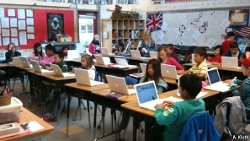
The Economist ran an inspiring and very optimistic piece last week called Flipping the Classroom.
The article describes how some schools are using new teaching methods to better engage and instruct their pupils. Introducing new technology to the classroom is nothing new, but getting it to make any substantial positive difference is. It's worth trying.
So far, I've been fairly doubtful about the utility of the computer in schools but, like so much else, the internet has changed a lot of things. There are a lot of very skilled and motivated people wanting to fix education and the tools are much better now.

The schools are making full use of Khan Academy, an online educational video producer. The videos are free and teach various subjects, with mathematics and science being particularly suited to this format. The videos are not only educational, but engaging and even fun.
There's a lot of choice. Pop over and play one yourself to see e.g. this one is on converting fractions to decimals.
By allowing the cheap distribution of high quality educational video and other material (courses, lectures etc.), the internet is acting as a real game changer.

Joel Spolsky's company Fogcreek announced a new product called Trello. It is a free and entirely web-based project management tool. But as Spolsky notes in his introductory blog post, it started life as a way of "digitising" the way people sometimes project "manage" with post-it notes. The concept has been kept simple.
Read his blog post introduction to see what it does. It's free to join up and use, so try it out.
My initial impression is that it's great. Seems simple, intuitive but also useful. Like any new application though, you've got to use it to get a feel and see how well it actually works. I'll have to consider how to do that.
There is an amazing number of very good HTML/Javascipt/AJAX style web applications around now, and all the frameworks and libraries as well. This is a golden age for the web. I'd like to try integrating this at work, alongside something like Google+, or similar "Web 2.0" applications, and see what happens.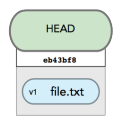
As well as being the creator of the Linux kernel, Linus Torvalds also created the source code management system called Git.
Git has caught the imagination of a very large number of people writing software, as well as many other people writing things they want to share, version and track. It's is a Distributed Version Control System, which means that anyone with the repository of files has the full respository and all history. No remote server needed.
Git's been very successful for a number of reasons.
Firstly, it's an excellent tool that works in a way many developers find natural in today's networked world : offline use, easy branching, good merging etc. It's also extremely fast.
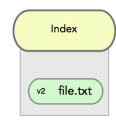
It also has a very broad ecosystem built around it, not least Github, a very popular and sophisticated web-based front-end.
Perhaps one of the big reasons for its growing popularity is its constant good "press". People write about it a lot, and what they write is often of a very high quality. Guides, tips and tricks, workflows and diagrams, and free online books. Git discussion and comment has a very high signal to noise ratio. So there is a constant good buzz around it. This is the best advertisement possible.
Linus Torvalds has a pretty good track record now.
I have borrowed the nice little pictures here from Scott Chacon's Git Reset post. Scott's the author of the Pro Git book, available for free at the same place. This is a great example of the high quality Git ecosystem

Scott James Remnant now works at Google but previously was an employee of Canonical, the makers of the Ubuntu Linux distribution.
He's just written a blog blog post arguing that Ubuntu should switch from its well known 6 month release cycle to something like a 2 month cycle but with associated release "channels" for development. Feature work can take place in "personal package archives" (ppa's).
The post is worth reading, especially if you're interesting in release management. Managing software releases is a problem for both commercial and free software development. The problem Remnant wants to solve is how to improve the quality of new features included in an Ubuntu release, such that they have fewer bugs and are more complete. Currently, because the distribution release is time-based (every 6 months), new features are as well and the incentives are there to stick them in ready or not. This is to the detriment of the distribution as a whole and its end-users in particular.
The post has generated some lively discussion and many comments on Remnant's post are worth reading. A fair number take the view that the schedule should be lengthened. Some refer to the perceived reduction in the distribution's quality over the years (stability, useability etc.). In my experience, an Ubuntu release was often a double-edged sword: updated software and new features, alongside the breakage of things that previously worked. It could be frustrating.
As Remnant says, the main reason to adopt the 6 month cycle was alignment with the Gnome release cycle. But now that Canonical has chosen the Unity desktop shell, the Gnome schedule is less important.
As is often the case, the comments have been as interesting and important as the post itself. Not only on Remnant's own site but also at Linux Weekly News. Also worth reading Chromatic's take on the problem Taming the The Great Stampede.
Personally, I think that Ubuntu should try continue doing what they used to do very well, that is, take Debian Testing and Unstable, stabilise and polish a bit. Then release. They need to keep emphasising the polish and the useability enhancements. Larger features such as Unity or the Software Center should be allowed to develop without the immediate requirement of being included in such-and-such release. Let them develop, stabilise and get tested more. The PPA style channel might be a good way to do this.
Fiennes, Nunn - The Tempest at The Haymarket

How many goodly creatures are there here!
How beauteous mankind is! O brave new world,
That has such people in't!
Having just finished reading Huxley's Brave New World, which gets its name from something Miranda (Prospero's daughter) says in the play, I decided that I had to take this opportunity to see The Tempest. My first time at Shakespeare in the theatre, a terrible admission to make.
My review : wonderful!
The play stars Ralph Fiennes as Prospero and is directed by Trevor Nunn. It's been something to notice every time I cycle home from work, passing the Haymarket Theatre with its striking picture of Fiennes against a stormy background. He's an actor I rate highly. The rest of the cast was excellent as well, especially Miranda (Elisabeth Hopper), Nicholas Lyndhurst (Stephano), Clive Wood (Trinculo) and Ariel (Tom Byam Shaw).
Like a lot of Shakespeare, the words tumble out quickly and it is often hard to hear and understand the gist of what's said. It takes time but one's understanding does improve and the author's genius comes through.
As Prospero says, he does rough magic on his island, and the production stages this well with a variety of stage (and even cinematic) tricks. My particular favourite being the angelic manifestation of Juno, with her nymphs Ceres and Iris, performing a heavenly song to bless the young lovers Miranda and Ferdinand. No roughness to this magic.
Yes, this show had some songs as well. Unexpected but beautifully done.
Read the whole play here. But better still, see it live.

... appalling. If you have an LSI MegaRAID card on Linux, you have to manage it using the LSI command-line tool megacli. This program has the worst interface I have ever seen, with terse, complicated and case-sensitive options highly dependent on the order given. Terrible!
# megacli -h
MegaCLI SAS RAID Management Tool Ver 5.00.12 May 08, 2009
(c)Copyright 2009, LSI Corporation, All Rights Reserved.
NOTE: The following options may be given at the end of any command below:
[-Silent] [-AppLogFile filename] [-NoLog] [-page[N]]
[-] is optional.
N - Number of lines per page.
MegaCli -v
MegaCli -help|-h|?
MegaCli -adpCount
MegaCli -AdpSetProp {CacheFlushInterval -val}|{ RebuildRate -val}
|{PatrolReadRate -val}|{BgiRate -val}|{CCRate -val}
|{ReconRate -val}|{SpinupDriveCount -val}|{SpinupDelay -val}
|{CoercionMode -val}|{ClusterEnable -val}|{PredFailPollInterval -val}
|{BatWarnDsbl -val} |{EccBucketSize -val} | {EccBucketLeakRate -val}
|{AbortCCOnError -val} | AlarmEnbl | AlarmDsbl | AlarmSilence
|{SMARTCpyBkEnbl -val} | NCQEnbl | NCQDsbl -aN|-a0,1,2|-aALL
|{SSDSMARTCpyBkEnbl -val} -aN|-a0,1,2|-aALL
...
...
Uugghhhh .... 3Ware's tool is much nicer. Since 3ware is owned by LSI now, perhaps they can get the author(s) of the 3ware command line tool to sort out megacli?
Sometimes, ssh shell access to a remote machine is not enough and you really need to see the user's desktop. Particularly when you are trying to help people that have little or no computer skill.
Luckily (or unluckily if you look at it in a different way) I need Linux to Linux remote access. But VNC alone can sometimes be a pain to set up correctly (and securely), and when you need to see a running X session not start a new one. There are a few "point and click" GUI solutions for Linux and one decent one appeared to be Teamviewer. It has a standard installer and a (Wine-based) GUI which is easy to use. I tried this and it worked very well - until it didn't. For some reason, it stopped working correctly and I could only see a black screen not the client desktop. I could not seem to fix this so had to look for something else.
Enter x11vnc.
X11vnc lets you connect via a VNC viewer to a real X11 session. So you can view and interact with the remote user's desktop as they watch. This is how I set up X11vnc and use an SSH tunnel to encrypt and secure the connection. Using SSH public key support only, this makes a very easy to use solution, and your user doesn't need to do anything at all.
On Remote System :
This is the system that needs support.
- Install x11vnc (should be packaged in your distribution)
- Install tightvncserver (gives us vncpassword)
- Create an x11vnc start script :
/root/bin/x11vnc
authfile="$(ps ax | grep auth | awk '/gdm3/ { print $13 }')"
/usr/bin/x11vnc -auth $authfileThis assume we are running Gnome and the Gnome Display Manager v3 (GDM3). The main point of this is to locate and use the X11 cookie that will allow a connection to the X server.
Make it executable : chmod +x /root/bin/x11vnc
-
Now create an x11vnc configuration file :
/root/.x11vncrc
display :0 # This will do in most single user machine
rfbauth .vnc/passwd # password file
rfbport 5900 # Use this default port
localhost # Only accept local connections. This makes your x11vnc secure along with SSH.
solid darkblue # Optional (changes background into solid color)
noxdamage
scale 0.9 # Whatever your (client) monitor/display likes
There are various options available and the above (scale,noxdamage) seems to work well for me. -
Set a VNC password (in a shell) :
vncpasswd
On Client System :
This is the system from which you are doing support.
-
Type the following command (replace HOST and PORT as applicable) in a terminal on your system :
ssh -p PORT -L5900:localhost:5900 root@HOST '~/bin/x11vnc'This starts the x11vnc script on the remote system (script created as above) and tunnels through SSH.
-
In another window, type the following to run your VNC viewer :
vncviewer -encodings "copyrect tight hextile" localhost:0There are various options available, the above seems to give good performance for me on my desktop.
In May 2011, The Post-Keynesian conference was held at Roskilde University, Denmark.
The economist James Galbraith (son of J.K. Galbraith) gave a talk about the European Economic Crises. The language he uses is eye-opening and brutal :
The text of the talk was on Naked Capitalism.
How bad are things? Pretty bad I fear and with worse to come. I just don't see the will or capacity to fix the system anymore. This means that things could get very rough in the next few years.

I wrote a blog post a while ago describing my love of coffee. It's undiminished. But from 4 or 5 cups then, I have cut down to 1 cup only, first thing in the morning. And even stranger, I have now made that cup decaffeinated.
For no exciting reason other than to see what a day without coffee was like, I bought some (decent, water processed) ground Java from the Algerian Coffee Company in Soho.
First day today and I can report that the coffee's not bad, but not as good as my usual (a bit more bitter). Even 1/2 hour after, I could tell it was decaff. But the major difference was from mid-morning until the mid-afternoon. A background low-level headache and feeling much more tired than usual. A big difference to my day in fact, even though I'm still drinking a few cups of tea a day.
I'm not keen on feeling physically dependant on anything, so I think I'll carry on with this "experiment", flush it out a bit and see what happens. My physical reaction just shows how strong coffee can be.
At some point however, I definitely want to try Kopi Luwak coffee. This is the coffee made from the beans eaten and excreted by a civet! Gourmet coffee apparently.
Visit to the British Museum for the exhibition Treasures of Heaven.
It's a cathedral like space inside the old library reading room, and very fitting for a show like this. The image above is from a page on wikipedia and shows the restored Reading Room. Don't expect the space to look like that however, because it's been converted into multiple rooms and has very subdued lighting. You only get a sense of the huge rotunda and walls through gaps in the artificial walls separating the themes of the show.
The exhibition has all sorts of reliquaries on display, going back to the earliest days of christianity. From something like a fragment of the "true cross", or part of Christ's "umbilical cord" to English saints such as Becket or Cuthbert. There is even some King Charles 1 who seemed to translate almost immediately to martyr and saint when beheaded in 1649 (an Anglican Church Saint).

South Netherlandish, c. 1520–1530
Some of the items are truly beautiful. Not only the gemstone encrusted and artistically worked caskets that contain many of the relics, but the figurative paintings sometimes wrapped around them. The large picture used to advertise the show (above and right) is also surprising. Fresh and natural and from the early sixteenth century.
Things really were very different in the past and religion really was a matter of life and death to people. Where what happened after death would impact you for all eternity, or at least until the Last Judgement. Peter Ackroyd is perhaps the premier cultural writer/historian of London and his Life of Thomas More well describes the deep religiosity that suffused the medieval world.

Bit of a painful day yesterday, getting my third puncture this month and the 4th this year ...
I am very sorry to say that I've been very lazy and always got a bike shop to fix the puncture for me. This costs about £30 each time though and is now getting more expensive. So, since the puncture happened on my way to work, and I'd have "advisors" available (people who know bikes), I thought I'd do it myself for a change.
Thanks to good advice, and even some hands on from various people at work, I got the back wheel of the brompton off, the inner tube patched and everything put back together.
I did manage to cycle home, but had to stop at a local bike shop and buy a better pump. Plus show me how to sort my gearing (see picture) because I only seemed to have gear 1 and 2, not all three!
And now the bike seems to be running almost perfectly. Now I need to schedule time to clean it ....
One thing with a Brompton: if you get a puncture, you can fold it up and get a bus. A big plus when it's pouring rain.
I mentioned the BBC Radio 4 program In Our Time in the post about my visit to Lambeth Palace.
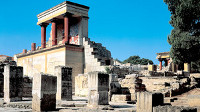
A lot of BBC journalists were striking this Thursday and this impacted a few BBC radio programs (e.g. the Today program was off the air). So, when the podcast of the latest episode of Melvyn Bragg's intellectual chat show failed to appear, I assumed it was due to this industrial action. It turns out that the show is just having a break until later this year.
If you like an informed conversation between people with a good knowledge of the subject, then this is the best discussion program on radio. Perhaps the best anywhere. Melvyn Bragg manages to ask good questions, gets out of the way and gives people the room and time to speak. The subject can be anything from ancient history to modern physics.
In an age where the level of discourse often sinks very low, this type of programme is an endangered species.
Samples :
See the complete archives.

I went to Lambeth Palace Library with a ticket for the new exhibition celebrating the 400th anniversary of the King James Bible.
The exhibition costs £6 and you need to book online (or call) for a particular time. When I saw the exhibition is open on Saturdays during July, I booked an 11 am slot.
Unfortunately, no photographs inside the Great Hall itself, but I took some of the grounds (the photo of the Great Hall below is taken from the Archbishop's web site).
On entry to the grounds and garden, we are greeted by a couple of ladies who act as our guides, and introduce us to the buildings, some history and the exhibition itself. In a way, it almost feels like you are being privileged to a private tour, although there must have been about twenty people in total.
The Palace and Library itself have quite an interesting history, from the times of the "heretic" bible translator John Wycliffe, through Henry VIII and the Reformation. Then through the Commonwealth and Restoration, and all the way up to the Second World War bomb damage. The Hall is a large room and every wall is covered with books, many of which seem to be very old, and almost all leatherbound.
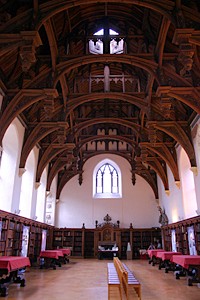
Great Hall
Location of exhibition
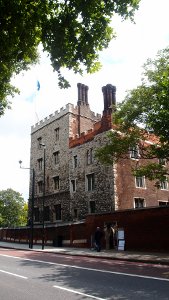
Lollard's Tower - now some
prime residential property?
Lollard's Tower contains the remains of a prison from the 17th Century,and is named after the followers of Wycliffe.
An empty space on its outside once contained a statue of Thomas à Becket, removed by Henry VIII who disliked any veneration it was shown by passing boatmen (the Thames used to run directly past the building, by its walls).
The exhibition is partitioned into various display "cases" which follow the history of common tongue biblical translation from the earliest days (e.g. Wycliffe in the 14th C), Erasmus through Tyndale, Luther and Calvin and even into the 19th Century with translation to languages like Cree and Malay.
Cases :
- The Wycliffe Tradition
Wycliffe translated "into the language not of angels but of Englishmen" - Renaissance Scholarship
- English Vernacular Bibles
Including William Tyndale's translations from the 1520's and 1530's, smuggled into England - The King James Version and Translators
Fifty-four scholars, headed by Richard Bancroft. Based on the Bishop's Bible but drawing heavily on Tyndale, Coverdale and the Geneva Bible - The King James Bible
The first edition open at St. Paul's Epistle to the Romans. MS98 is also shown, an early draft made by the Westminster company - Early European Vernacular Bibles
- Spreading the Word Overseas
- Textual Scholarship and Critical Editions
- Towards a New English Translation for the 20th Century
Definitely worth a visit and it would be good to have a better look around the rest of the place sometime as well. Walking distance from Vauxhall by the river.

So, I bought a new laptop. It's a Lenovo X220 Thinkpad and a pretty nice machine. An Intel Core i7, 8 GB RAM and a great keyboard. A shame it's got a touchpad since I only use the trackpad (like on my X60s): I disabled the touchpad in the BIOS.
I initially tried to install Debian Stable (Squeeze) on the machine, but the display resolution was wrong because X wasn't new enough. So, I installed Debian Testing and ran with this for a few days. Mostly OK but at least one solid lock-up a day and no error reports in systlog or Xorg.log.
This is very new hardware, and from scanning Phoronix (for example), I know a lot of Intel DRM work (both driver and kernel) is ongoing. So I downloaded Linux 3.0 (rc4, then rc5) and made a kernel package in the Debian way :
make menuconfig
make kpkg clean
make-kpkg --initrd --append-to-version=hecate --revision=01 kernel_image
So far, so good. No nore lockups.
- The display's great (crisp and bright)
- Keyboard's very good, as usual
- Suspend to RAM and disk works
- Audio works
- WIFI works
- Webcam works
A while ago, I wrote about both Gnome 3 and Ubuntu Unity, as the new faces of the Linux desktop. Well, since then, the two desktops have been released and a lot of heat generated. I still haven't (properly) used either, but have seen Gnome 3 used by a colleague at work, who likes it a lot (it certainly seems fast and responsive).
Like many, I'm torn. The "problem" is that the classic (previous/old) Gnome desktop (Gnome 2.30) works really well for me now. As someone who's used Gnome since the first (admit it, not so great) version, it's matured into something that looks great and works very well.
So, why do I have to change? The issue is that the new version is such a major change. Although Gnome 3 has a "classic" desktop shell option (fallback mode), I think it is much more restricted than v2. It is also an option that will be removed I believe. So maybe a Gnome 2 fork is worth doing?
I'll wait and see what Debian does. So far, Debian Unstable is still Gnome 2 but this is now a dead-end. Currently, there is no alternative Gnome future. If I don't like it, I'll switch.

The Economist magazine, a magazine I generally rate very highly, has made no bones about its antagonism with the Italian Prime Minister, Silvio Berlusconi.
This headline excels though :

A couple of months ago, I bought George R R Martin's book Game of Thrones. I can't recall why because I don't often read this type of "fantasy" novel.
However, I think that one of the reasons was the critical acclaim it has, with a great many people (see Amazon's reviews) praising Martin's writing. Having finished it a few weeks ago, I agree. It is a well written and well paced book, with characters you can believe in.
I had no idea it was being made into an HBO series. I've seen the first episode now and it is a very well done adaption, well acted and beautiful to look at.
Sean Bean's really cornering the market for grizzled warriors - what with Boromir, Odysseus and now Lord Eddard Stark.
Now, there are five more books in the series, and each is substantial. I do want to read them but will have to decide how to parcel this time out. There just don't seem to be enough hours in the day anymore!

I wrote a post a while ago called Sugar - Toxic?. This linked to an article in the New York Times by Gary Taubes, about UCSF professor Robert Lustig's concerns about sugar use (especially High Fructose Corn Syrup).
Lustig is interviewed on US public radio KQED San Francisco and the interview is available as a download here :
It's about an hour, with no actual adverts, and worth a listen. We're paying for convenience in more ways than one.
If it's not family members having some trouble with a Bridge game's Windows 7 compatibility (none, as it turns out), it's card problems of a plastic nature.
I often seem to have problems getting a hold of a replacement bank card when mine is coming up to expiry. At the end of the month, my debit card expires and I've been keeping an eye out for weeks for the new one. Turns out that went missing, so I've got the bank to send a replacement. Thank goodness, received.
Now I have had to spend hours going through my various online relationships and check what card might be registered, changing or deleting as appropriate. This is where some form of secure online identity would be useful, so I could update my profile once and have everyone start using it immediately.
Unfortunately, I introduced a big problem with the word secure ...
Great and Manifold Blessings is an exhibition currently on at the Cambridge University Library to commemorate the 400th anniversary of the King James Bible of 1611. Although only spanning a single room, it contains some of the most important books in the English language as it takes us through the history, and prehistory, of the creation of this most important book.

It's a fascinating story that covers John Wycliffe's early translation and William Tyndale's larger and more successful work. Along with Shakespeare, William Tyndale is now recognised as one of the major originators of the modern English language and many of our most famous and beautiful phrases are his. Much of his original text was used in this new translation and we are all the better for it.
This wonderful writing ability, translating from original Latin, Greek and Hebrew (his unfinished Old Testament) and his biblical scholarship are all markers of a great man. This period in history was a time of much turmoil, and Tyndale paid the ultimate price for his work when he was executed in 1536. Although not bearing his name, the King James Bible certainly bears his imprint and is a very fitting testament to his life.
I visited The Wallace collection on Saturday 16th April, primarily to have a look at the Watteau by recommendation. However, the museum itself proved to be a real gem with a lot of very interesting things to look at. It is also free.
Situated just a few minutes from Oxford Street, walking up Duke Street to Manchester Square might as well be a million miles away from the shopping hoi polloi.
The museum is a large house, but small enough that a morning or afternoon would be sufficient to see most of it. French 17th and 18th Century artworks make up the heart of the collection, both paintings and furniture (including clocks).
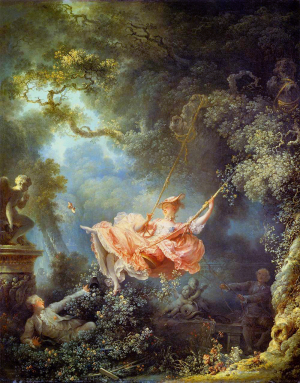
I first encountered Watteau as part of an art history course I took when doing my (Physics) degree. This part of the course concentrated on the Baroque and then Rococo styles prevalent at the tail end of the 17th and start of the 18th century.
The Wallace has a lot more of interest though, I also saw a Fragonard (the famous The Swing (see right)), Franz Hals' Laughing Cavalier, a Titian, Perseus and Andromeda, a Canaletto and many other beautiful paintings, miniatures, furniture, clocks and armour. The collection of armour is one of the largest in Europe, covering both European and Asian weapons and cloths of warfare.
Overall, an excellent afternoon out and well worth another visit.
There's a great article in the New York Times about the (probable) dangers of sugar, written by Gary Taubes :
Gary Taubes is a respected science journalist and author of a book I read last year called (in the UK) The Diet Delusion ("Good Calories, Bad Calories" in the US).
The Diet Delusion is a detailed investigation of the the problem of obesity, diabetes and related problems, and posits that the causes of the modern epidemic in the west is primarily diet. Carbohydrates and sugars. This book has had a major impact on me and what I eat.
Taubes has followed up The Diet Delusion with a shorter and easier to read book called Why We Get Fat. I can highly recommend both. But the NYT article is a condensed version of some of the argument and a must read.
I used to travel to work on the tube, but the poor service and strikes, crowding and then the summer heat, made me look for alternatives. I then started to get the bus, and even though I had to get up a little earlier to make sure I got to work at a good time, much preferred it. The route is excellent as well.
I had also wanted a bike for a while, but circumstances[1] made that hard until last September, when I finally bought a Brompton.
I caught the last of the good autumn weather and have managed to cycle to and from work 5 days a week, and use the bike at weekends. This is over a pretty bad winter as well, with only a couple of days unused due to snow and ice (something I am a bit allergic to!).
Having the bike has made a massive positive difference to me. Not only do I get to work and back a lot quicker (and consistently), it's easy to travel around and do things at the weekend. The route I take to work is pretty easy as well and I mostly follow the same 88 bus route I'd use on the bus. Bus lanes and quieter roads (except for Vauxhall). The Brompton is fairly easy to carry short distances, so can be taken into a shop for instance, or stored safely under your desk. I have had a puncture though, so it's not all good.
A perfect little commuter bike and a great buy!
However much the bottle cost, or wherever it's from, how the wine tastes to you is all that matters



I don't drink as much wine as I used to (sometimes staying alcohol free now) and am certainly not a wine connoisseur, but I like a glass or two of red wine with a meal, a civilised accompaniment. When I mentioned that I buy wine at my local supermarket, Sainsbury's, a friend made the comment that "you can't buy a good bottle of wine at Sainsbury's".
That seems completely wrong to me, but did set me thinking about the difference between the varieties of wines available in the supermarket versus the wine shop.
For a change, I decided to buy some wines from Laithwaites (Borough branch). It's a fairly large wine shop with a good range and helpful staff.
The three I chose are ranked as the best customer recommendations :
- The Black Stump - Shiraz 2010
- The Waxed Bat - Shiraz Petit Verdot Malbec 2009
- Willy Willy - Shiraz 2009
All Australian, all shiraz but worthwhile for comparison to wines I might buy in Sainsbury's - like a Shiraz from Hardy's, a Lindeman's or (from California) a Gallo.
Results so far : The Black Stump is very highly rated and is certainly a lovely, smooth red wine. It's a few pounds more than a Hardys Stamp Shiraz-Cabernet and probably worth it. But the Hardy's is not a bad wine and worth drinking. If you visit a site like supermarketwine.com you can see that some Sainsbury's wines are reviewed and rated quite highly (e.g. The Guardian).
It's good to try the occasional non-supermarket wine because even though their range seems large, it's actually tiny compared to the choice available. But for your day to day wine needs, the supermarket's perfectly acceptable.
The main component of the new Gnome 3 desktop is the Gnome Shell, and it's been this that has drawn most attention. The shell defines most of the way the user interacts with the desktop environment, so concentrating on this part is natural. The shell is the biggest change from the user's perpective (hence the wailing from some quarters).

An alternative shell for Gnome 3 is Unity, a component primarily developed by Canonical and Ubuntu.
Unity is also a major change from the current Gnome 2 desktop and has drawn a similar level of criticism and praise.
I have not tried Unity yet and, as with Gnome 3, am cautious. However, the idea of an alternative shell is attractive because it brings me greater choice. In fact, the concept of choice is critical to a healthy ecosystem and at the heart of the free software movement. Having said that, it also has costs, like fragmentation and a loss of focus. It can also lead to some strife and bitterness.
Right now, having two competing visions of the next generation Gnome Desktop is a good thing in my opinion. Both are new and need to gain mindshare and traction, so there's all to play for. This is also not a zero sum game.
The next year or two will be interesting. Good luck to both.

When I started running Linux, I used a "window manager" not a "desktop". A window manager like FVWM, which was fairly basic but perfectly functional for starting applications like a terminal and a web browser (all you really need).
When Gnome came along, I started using it almost immediately and have used it ever since. It's changed a lot over the years, maturing into a much cleaner and professional desktop environment. The transition from version 1 to 2 was a little rocky but this proved to be only growing pains, as the desktop stripped out over-complexity and simplified itself. It became more useable.
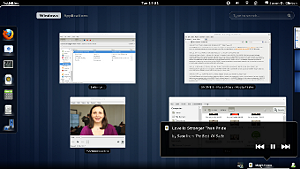
The Gnome3 desktop was released last week but I won't be using it, at least not for a while. Given my recent switch to Debian on the desktop, and a few (still unresolved) hiccups, I'd rather not have the extra "excitement" for now.
Version 3 has had a very mixed reaction from people - it's a major redesign of the desktop. I tried it a month or so ago via a Fedora based live CDROM and loved the look. But playing with it for an afternoon doesn't give me a good idea of how well it works in real life. It looks great but I have some trepidation about the useability.
So, for now I'll stick with Squeeze's Gnome 2. It works well and I can find my way around it quickly. But I'll keep a close eye on the Gnome 3 evolution because I hope and expect to be using it in the near future. Congratulations to all involved with the release!
Looking good .... :-)
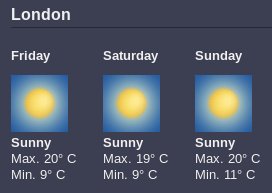
Moen & Sons is a real butcher and it's been in Clapham for quite a long time now.
I think it's only the past 5-10 years that it's blossomed fully though and for the same reasons that Borough Market is so busy nowadays. People want good food, something less bland than what's often available in the supermarket.
I can thoroughly recommend their traditional pork sausages!
PC Update
Still here .... closely monitored ....Ughh ... Oops
I spoke a bit too soon perhaps ..
On the way out yesterday, my desktop PC froze when I decided to empty the nautilus/gnome "wastebasket". I was ripping a DVD at the time (Downfall, very good) and streaming radio, so I left thinking it might spring back to life when I got home.
It didn't. So a hard reset. And now I keep getting kernel oops and freezes, and have to hold the power button down to switch the system off, before powering up again.
It's usually hard to diagnose this sort of thing, at least if you're not familiar with the internals of the kernel, or drivers. It looks like it might be network related (e1000e), or maybe NFS. I mount a main NFS volumne from my QNAP (T419P), and maybe another NFS volume (USB disk exported). I've forced mounting NFS version 3 (vers=3 in /etc/fstab) and things might have settled down ... I hope so.
I'm monitoring the situation ... I really don't want to have to deal with this just now.
So, I took the plunge this morning and installed Debian Stable (Squeeze) on my desktop/main system at home. Thinking it's a Saturday, so if something went wrong, I'd have the time to fix it up.
Of course, some things did go wrong, but luckily not very much. It's all working pretty well now.
What have I had to fix up?
Audio
I have a USB headset plugged in for Skype, and the system decided this was my main sound device, relegating the onboard Intel HDA device to index 1 (not 0). I rectified this by forcing the default ALSA sound device via the file :
/etc/asound.conf
Containing :
You can figure out the devices and indices by running aplay -l or aplay -L.
This ALSA .asoundrc reference was very useful here.
Skype
I installed a static version of Skype because they don't have a 64 bit deb package for Debian. I changed the audio devices it uses via the "options" menu, and make sure I use the USB Headset.
It works mostly, but recording (voice) was bad - sped up as if the sample rate was wrong. I might need to re-start the system. More to do anyway.
I did manage to fix the font size problem though, and make the tiny fonts larger. Install and run qtconfig-qt4.
This is a cropped portion of the list of audio devices Skype presents to me when I want to set the device (for output, plus microphone) :

You can understand that this stuff gets a bit confusing sometimes. Yes, desktop linux needs work in some areas!
I'm not much of a fan of Skype, but I wish they updated the Linux client. Having said that, they seem to have seriously screwed up the Mac client, so maybe it's best to quit while we're ahead.
Next ...
I might have a play with compiz. I need to configure munin (desktop's being monitored by the server). Check emails go overnight (logwatch etc.). Looking good!
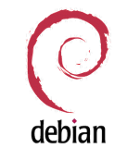
A short while ago I mentioned I'd switched my laptop to Debian Testing (from Ubuntu 10.10 "Maverick Meercat").
That's not quite true anymore. Having done a bit of research, it turns out that Debian Testing is probably not the right version of Debian to use, primarily due to the slight delay on getting security updates out to it (there's a week or so delay often, sometimes more). This seems to be "as designed", and the way the process works.
So, taking the bull by the horns, I wiped Testing and stuck Stable on my Thinkpad X60s. Everything seems to work still and I'm happily using it. Looking back on the history of Linux, Debian and laptops, this is definitely something worth celebrating. We've come a long way ....
Last autumn I decided to try and lose a bit of weight and get a little healthier. Mainly by sorting out my diet. That meant cutting out processed food, a lot of carbohydrate and sugars (including beer). I'm generally good at avoiding temptation, and temptation is all around. The following two shop windows are right below my place of work :
Getting to work is a minefield of cup cakes and layer cakes ...
In the old days (20th Century), people took photos with a camera. Nowadays, many (perhaps most) people use their mobile phone. Because many mobile phones build a fairly decent basic camera into the phone, many people have a camera with them at all times. This is the reason I started taking more pictures again.
My current mobile phone (HTC Desire) hasn't got as good a camera as my previous one (a Sony Ericsson W910i), so I decided to buy a proper camera :

Being a lovely sunny day today, I took it for a spin with a walk down the north side of Clapham Common to the Junction. The picture quality is leaps and bounds better than the phone.
What this means for the artistic quality of my photographs remains to be seen. The camera can take pictures as big as 4K pixels .... so if the pictures aren't good, it will be hard to hide :-)
Weeping Willow on Clapham Common North Side.Click for large version.
Some absolutely beautiful photographs taken by Kris Dutson of various parts of England. The landscape and the weather have never looked so good.

Why a Switch to Debian from Ubuntu?

I've been a happy user of Ubuntu since Hoary Hedgehog (Ubuntu 5.04). So why am I considering a switch to Debian?
It's a combination of things really :
Ubuntu seems to be going its own way with the desktop - Unity, Ubuntu One (and Ubuntu Enterprise Cloud), global menus for applications, window decorations etc. I'm not worried about a lot of this (and all power to Canonical trying to make a business) but it might start to negatively impact my desktop. It's also a bit of a hard sell when I have to ask people to "unlearn" some desktop interaction painfully learned only recently (e.g. my Mum).

In addition, Canonical (the commercial entity behind Ubuntu Linux) seems to be taking a more active role in trying to monetise the distribution. There's nothing wrong with this per se, but they've been a bit cack-handed recently (e.g. Banshee) and this has left a bit of a sour taste in people's mouths, including mine. Ubuntu has gathered a great community around it, with Mark Shuttleworth as the "benign dictator", but it is a lot more of a closed community than Debian. For good or bad, I prefer the Debian way because it gels more with the free software ethos.

Why not Fedora? I used Fedora a long time ago, only stopping when yum became unbearable (slow mainly) and I got tired of breakage on the (constant) updates/upgrades. But it's better now and yum works very well - as well as Debian's apt. We also use Fedora at work as both a preferred desktop for some engineers and a buildbot master/slave system. I'd be perfectly happy using Fedora and it matches Debian's fee software and community ethos.
But I know and understand the Debian way better now. So, let's see how things go. Long live Ubuntu. Long live Debian. Long live Fedora!
I've been using Linux a long time (1994/95) and the Debian Linux distribution's been around for longer (1993). But back then, Debian could be painful to install and these were the days that installs were floppy disk based and modem's were slow. That was if you were on the internet at all. I managed to hop on the information "superhighway" in 1995 or so, at a blazing 9600 baud. One thing I do not miss is trying to configure PPP options and chatscripts!
So, I was a happy user of Slackware for 2 or 3 years, the days of compiling pretty much everything bar X from source (this was a 486 and 64MB RAM, so things took time ...). Then working through the original Redhat (3 or 4), up to version 8, switching to Fedora Core 1, then 2 and then ... bailing on that and jumping to Ubuntu for the hedgehog, where I've been ever since. In all that time, I tried a few other dists as well. However, Ubuntu got it right for me, at the right time and things just worked much better out of the box.
My Mum uses Ubuntu for heaven's sake. What a change.
I am already running Debian Lenny (old stable)) on various servers but took the plunge at the weekend on my laptop by installing (feeling brave) Debian Testing (codename: Wheezy). It's not diverged too much from Squeeze (stable) yet, so I thought I'd give it a go. The laptop is the most complicated "desktop" I have, given wifi, 3G dongles, suspend etc. So far, it is working wonderfully - even the 3G dongle ("3" via Network Manager).
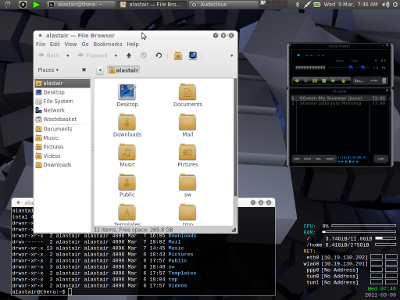
Hopefully, I'll manage to stick with it and switch away from Ubuntu on the desktop. I'll detail my reasons why in the next post or so.

The Blue Night, Venice 1897
by Arthur Melville
Pricey (£14) but a good exhibition and worth seeing.
I think my favourite pictures were some of the tiny miniature portraits from the 16th and 17th centuries. These are small oval paintings about 3-4 cm in size, and usually the head (and perhaps shoulders) of the subject (the subjects being nobility in general). A few of the paintings were good because they used subtle facial expression and detail to make the subjects come to life as real individuals (something Hogarth does on a much grander scale elsewhere in the gallery).
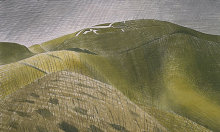
The Vale of the White Horse c.1939
by Eric Ravilious
The exhibition covers five centuries, all the way to very recent works. There are also a few Turner watercolours, and we can see how closely his more famous oil paintings are mirrored in the watercolours he did. The way the colours wash into each other is his signature and he achieves a very "watercolour" effect even in oils. Turner's a "star" but other land, sea and town-scapes also stood out and show how versatile watercolour is.
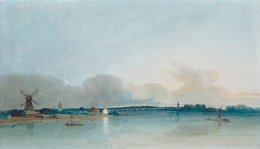
The White House at Chelsea 1800
By Thomas Girtin
One thing that I wish I had was a small notebook, so I could note down the pictures and artists I was most taken with. Using the mobile phone to do this seemed to much trouble. I wish the free booklet given out had thumbnails of all the works displayed. Unfortunately, I can't remember many or would link to them. Google helps a little though.
Tate Britain 16 February – 21 August 2011
More pictures and comment here :
A short review of the exhibition was on the Social Affairs Unit blog. The strap is "A minister's egg of an exhibition but parts of it are excellent".
I had to look that phrase up and discover that it's more often written as "a curate's egg ..", from a famous Punch cartoon.
So, overall, much more critical of the artists ("way behind the Impressionists and their successors") and therefore definitely at odds with my opinion. The potshots at Scotland and Glasgow are unwelcome as well ... being half-Scottish.Via Hack the Planet, a post from Lauren Weinstein about people who use Google (web, images, etc.) to harass and humiliate.
Of course, Google's "just" the transport mechanism, the messenger service. But as I wrote about before, the fact that they provide no human support contact, or support number or address, can add a tremendous amount of frustration, worry and pain to an already painful situation. Google need a mechanism that resolves these issues in a transparent way. I like Google but this is a real concern.

I'm not a gourmet sausage eater by any stretch, but I thought I'd skip the usual sausage fare at the supermarket this morning and try some from Borough Market instead.
The market's got a lot of choice in sausages. In fact, a lot of choice in everything. But I settled on some Boston Sausages - a few "boston", and a few "farmhouse" style from the same place. Having just tried some with my lunch I can say they were wonderful. You can really notice how much better they are than my normal ones.
I'll definitely make a habit of buying these again.
Jacinta Richardson did a Perl best practices talk at Linux Conf Au in Brisbane Australia recently.
It was a pretty good talk and overview of some of the more recent Perl functionality. The emphasis is on writing decent and maintainable code. There has been a lot of work done on pushing a Modern Perl in the last couple of years and I'd like to come back to this and discuss further. For now, Jacinta's talk advertised some modern Perl I was unfamiliar with (as well as some I am).
This is a rough list of particular interest - those in bold I know or use. The rest is new :
state declaration (static var)
given
~~ smart match
Smart::Comments
perlbrew
local::lib
cpanm
module-starter
test::most
use 5.10.1
perltidy
perlcritic --harsh code.pl
Scalar::Util, List::Util etc. - built in
ORM not SQL
use Method::Signatures
Path::Class
\A - match abs. start of string e.g. /\Amatch/
\Z - match abs. end .. /match\Z/
Change delim i.e. m{//}
use qr{} e.g. $lhs = qr{(\w+);(\w+)} --> ? - where we might then use $1
Regex::Common
Went to see Jerry Sadowitz doing a comedy gig on Saturday night. One of the things he ranted about was "IT" geeks running home and writing up his show on the computer. He got quite worked up about it ... and here I am!
I think the last time I came across Sadowitz was 25 years ago in Edinburgh (probably the festival) and the 80's was his breakthrough decade. Of course, he is so offensive that he's not getting anywhere near the TV or radio generally.
You think you're pretty immune to offensive comedy today because it's so common. To a certain extent that's true but there are still some areas that are off limits. To most at least. Not people like Jerry Sadowitz though. Very funny in parts, obnoxious and insulting to everyone (including Islam for a refreshing change). Too much for most people. You have been warned

I popped up to the Royal Academy yesterday (Saturday) morning because I wanted to see the Glasgow Boys exhibition before it finished on the 23rd Jan 2011.
The short review - very good. Beautiful paintngs by artists getting some deserved attention again.

I visited family in Edinburgh in October 2010 and the Glasgow Boys came up - a well known painting by one of the group's members on the wall. This is Sir John Lavery's "The Tennis Party", shown below.
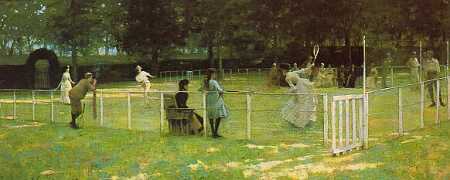
The exhibition was quite busy and I had to edge my way around the wrong way in order to see the pictures. Perhaps busy because it was the weekend but I think because of popularity as well (the catalogue is sold out).
The range of subjects shown are mainly country and urban landscape, with a very naturalistic representation of nature and people. One of the most striking things I found was the beautiful depiction of light and the arresting and natural way people are shown. The painting of Auchenhew on Arran by James Nairn is shown above and has a wonderful warm pink glow as the sun goes down across the shore. Also see the bright dappled spots of afternoon sunlight on the grass of Lavery's painting.
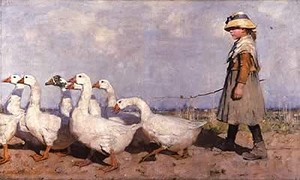
A surprising discovery was how good some of the watercolours were. Nothing wishy-washy about them, but strong and deep colours. Again, a lovely understanding of light and shadow.
Talent wise, I think it is very apparent that little, if anything, separates many of these artists from the much better known Impressionists.
The artists of note :
- John Lavery
- E A Walton
- Arthur Melville
- Joseph Crawhall
- James Guthrie
- George Henry
- E A Hornel
- William Kennedy
- James Paterson
The Glasgow Boys on Wikipedia.
These artists were all men but there are also Glasgow Girls with a recent exhibition. Keep an eye out.
 I really like coffee. I'm a coffee drinker at heart, rather than tea.
I really like coffee. I'm a coffee drinker at heart, rather than tea.
However, about 6 months ago I decided to cut my coffee consumption, down from the 10 cups a day (or so) to .. well, 4 or 5. I'm on about 4 cups of ground cafetière coffee now. I did this for "health" reasons, thinking I was drinking too much. But was I? I don't think I had any coffee related health issues (jitters, heart, sleep trouble).
Reading this page on Lifehacker has started me thinking again about coffee consumption.
Then again, I'm starting to enjoy a cup of proper green tea :-)
Maybe I need to cut out the caffeine completely for a couple of weeks and see what happens ....
 I missed it the first time around, but this BBC documentary from a short while
ago is excellent :
I missed it the first time around, but this BBC documentary from a short while
ago is excellent :
The Joy of Stats (Youtube)
The main reason that this program is so entertaining is the presenter, Hans Rosling. He's a Swedish scientist who seems to be gaining quite a reputation on the net for his engaging talks about statistics and how they can be used to improve the lot of humanity. Quite a few well regarded TED talks for instance.
Statistics is also a discipline very well suited to the use of pretty pictures. It's called data visualisation and you can buy coffee table books about it (David McCandless appears in the program). As the program shows, visualising statistics was surprisingly pioneered by Florence Nightingale. This is well worth the time watching - entertaining even to those that know no statistics!
 It's interesting that the recent Skype service downtime has hit the news in a fairly
big way. On the front page of BBC news no less, and for a number of days.
It's interesting that the recent Skype service downtime has hit the news in a fairly
big way. On the front page of BBC news no less, and for a number of days.
So a few more people now see that Skype is potentially a very invasive piece of software - if you're on a public IP address at least. This is because of their use of (so called) supernodes (Dan York's excellent summary of how Skype works, with pictures).
Basically, Skype might use large amounts of your network bandwidth (and CPU) to route Skype calls via your PC. Of course you agreed to this when you clicked "I Agree" in their EULA, right?
So, maybe a recently software update pushed to the Windows clients caused a lot of clients to start crashing, and so a lot of
Skype's a very closed company and don't disclose much of their technology or cryptography. Their Linux client plays a distant second fiddle to Windows and they're not open source friendly. When I learned about the "supernode" concept a few years ago, and about how disruptive this traffic might be on a network, it made me very wary of Skype use. I still am.
Update 2011-01-01 :
Well, Skype's CIO, Lars
Rabbe, posted a discussion and explanation of this outage on his blog.
Turns out that a fault with a Windows
software upgrade made the whole network unstable, with the




